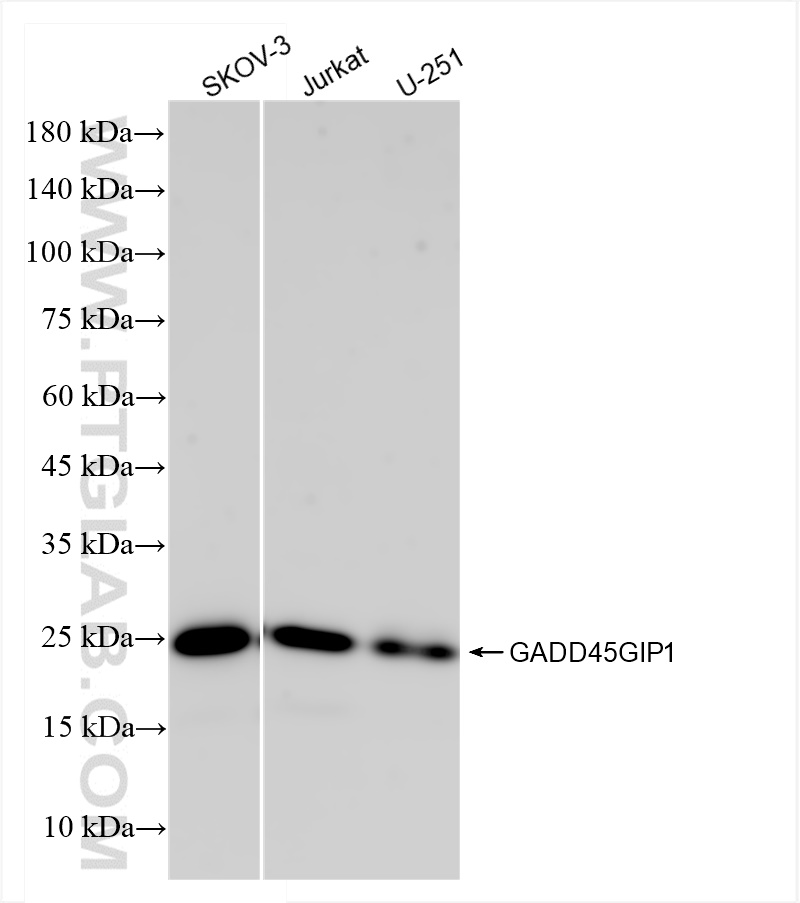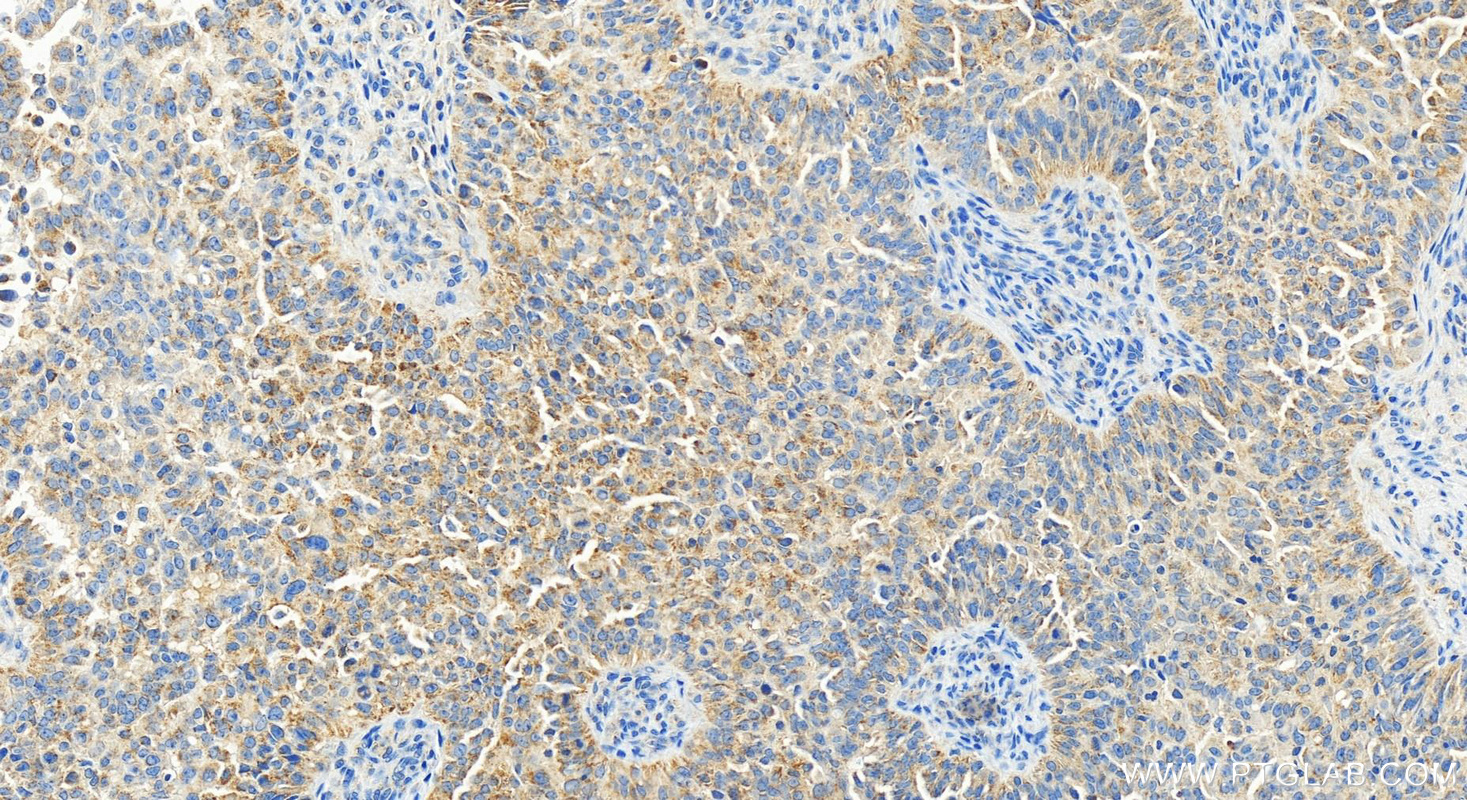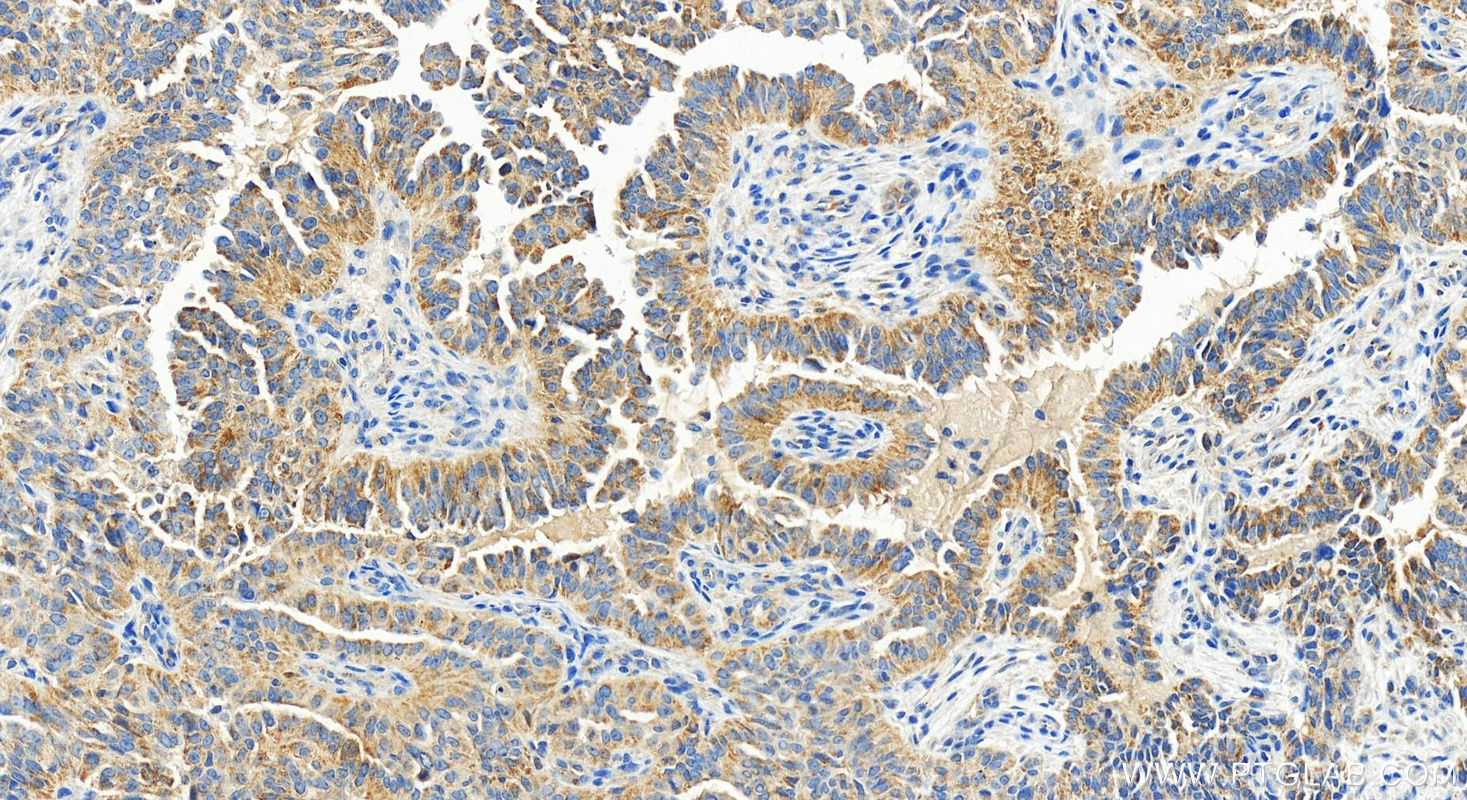验证数据展示
产品信息
83823-5-PBS targets GADD45GIP1 in WB, IHC, ELISA applications and shows reactivity with human samples.
| 经测试应用 | WB, IHC, ELISA Application Description |
| 经测试反应性 | human |
| 免疫原 |
CatNo: Ag9299 Product name: Recombinant human GADD45GIP1 protein Source: e coli.-derived, PGEX-4T Tag: GST Domain: 1-222 aa of BC013027 Sequence: AASVRQARSLLGVAATLAPGSRGYRARPPPRRRPGPRWPDPEDLLTPRWQLGPRYAAKQFARYGAASGVVPGSLWPSPEQLRELEAEEREWYPSLATMQESLRVKQLAEEQKRREREQHIAECMAKMPQMIVNWQQQQRENWEKAQADKERRARLQAEAQELLGYQVDPRSARFQELLQDLEKKERKRLKEEKQKRKKEARAAALAAAVAQDPAASGAPSS 种属同源性预测 |
| 宿主/亚型 | Rabbit / IgG |
| 抗体类别 | Recombinant |
| 产品类型 | Antibody |
| 全称 | growth arrest and DNA-damage-inducible, gamma interacting protein 1 |
| 别名 | CRIF1, CR6-interacting factor 1, CKII beta-associating protein, CKBBP2, 39S ribosomal protein L59, mitochondrial |
| 计算分子量 | 222 aa, 25 kDa |
| 观测分子量 | 25-28 kDa |
| GenBank蛋白编号 | BC013027 |
| 基因名称 | GADD45GIP1 |
| Gene ID (NCBI) | 90480 |
| 偶联类型 | Unconjugated |
| 形式 | Liquid |
| 纯化方式 | Protein A purfication |
| UNIPROT ID | Q8TAE8 |
| 储存缓冲液 | PBS only, pH 7.3. |
| 储存条件 | Store at -80°C. The product is shipped with ice packs. Upon receipt, store it immediately at -80°C |
背景介绍
Growth arrest and DNA-damage-inducible proteins-interacting protein 1(GADD45GIP1), also known as CRIF1, is newly identified de novo components in large subunit of mitoribosome. It is essential for the translation of mitochondrial oxidative phosphorylation (OXPHOS) polypeptides in mammalian mitochondria. The essential role of CRIF1 in mitochondrial synthesis and membrane integration of OXPHOS polypeptides was shown in brain-specific CRIF1-deficient mice, which exhibited profound OXPHOS failure and marked neurodegeneration. (PMID 22819524) In addition, GADD45GIP1 enhances the function of GADD45 in maintaining genome stability, DNA repair and cell cycle regulation by interacting with the GADD45 protein family. It's reported that GADD45GIP1 may be induced by p53, a process that is closely related to the cell's response to DNA damage.(PMID:28599472)




